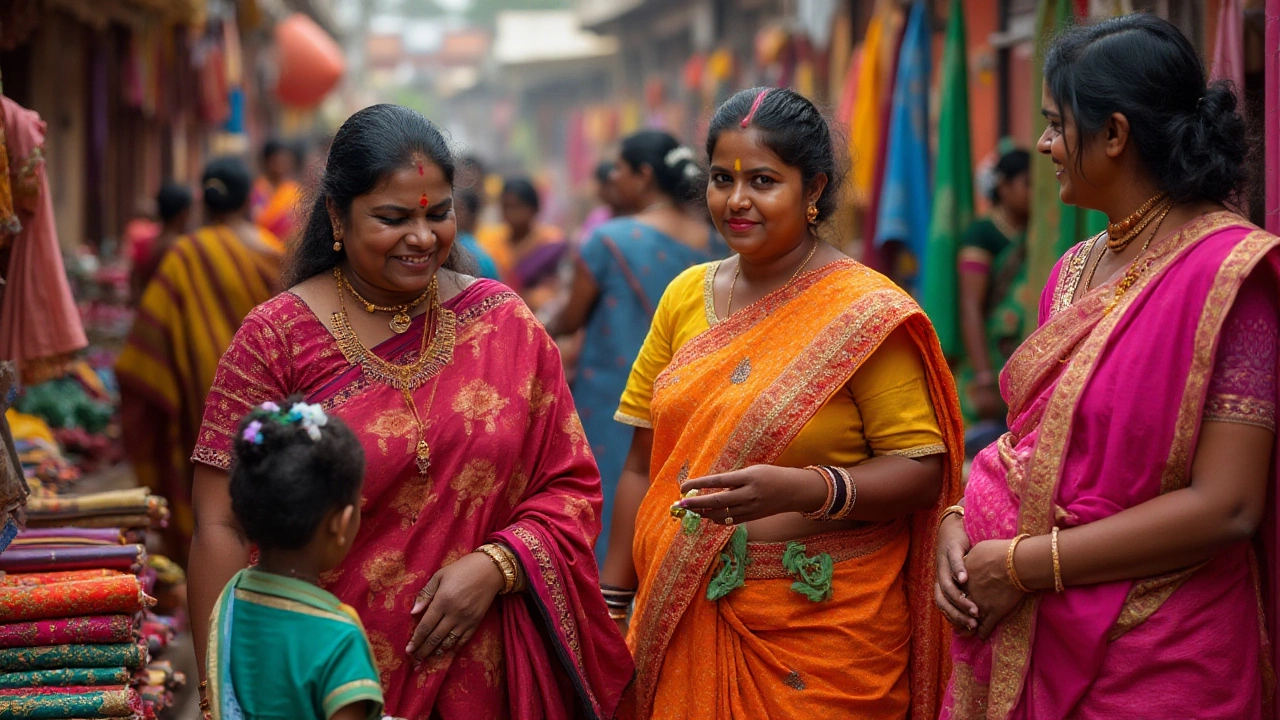Women's Clothing in Tamil Culture: Traditions, Styles, and Modern Trends
When you think of women's clothing, the vibrant, handwoven textiles and draped silhouettes that define Tamil identity, you’re not just seeing fabric—you’re seeing centuries of craft, belief, and daily life. In Tamil Nadu and among Tamil communities worldwide, what a woman wears isn’t just about fashion. It’s tied to rituals, seasons, social events, and even the time of day. The saree, a six-yard cloth draped in over 100 distinct ways across India remains the most common and respected form of dress, especially during festivals, weddings, and temple visits. Different regions in Tamil Nadu have their own styles: the Kanchipuram silk saree with its heavy zari work, the Madurai cotton saree with bold checks, and the simple, breathable linen for daily chores—all tell a story about where you’re from and what matters to you.
Then there’s the veshti, the traditional dhoti-style garment worn by men, but also adapted in modified forms for women in rural and tribal communities. While less common today, some older women, especially in villages, still wear a stitched version called the "pattu veshti"—a draped, wraparound lower garment paired with a blouse and dupatta. It’s practical for heat, movement, and labor, and it connects them to generations before them. Modern Tamil women don’t just wear these clothes—they reinvent them. Young designers are mixing traditional prints with crop tops, turning saree pallus into shoulder bags, and using digital printing to bring folk motifs into streetwear. Even in diaspora communities in Singapore, Malaysia, or the U.S., Tamil women keep the saree alive—not as a costume, but as a quiet act of belonging.
What’s missing from global fashion lists is how deeply tied Tamil women's clothing is to rhythm and ritual. The way a saree is pleated before a temple visit, the color chosen for a newborn’s naming ceremony, the gold thread stitched into a bride’s dupatta—all carry meaning. You won’t find that in a mall catalog. But you’ll find it in the stories behind the posts below: how women in rural Tamil Nadu still weave their own cloth, how Diwali brings out new sarees in every household, and how even young girls learn to drape their first saree from their grandmothers—not from YouTube tutorials. These aren’t just fashion choices. They’re living traditions, quietly holding together culture, identity, and memory. Below, you’ll find real stories, real clothes, and the women who wear them with pride.
